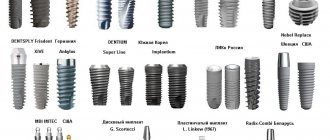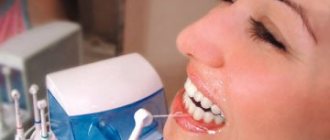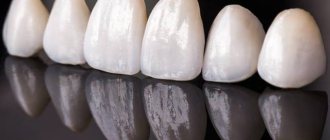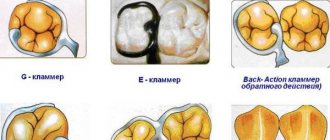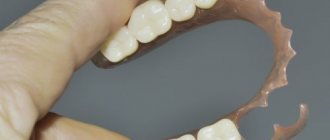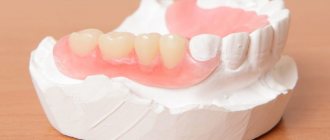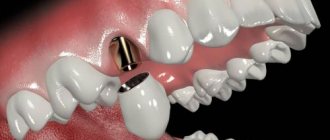All equipment used in dentistry can be divided into several types. It is convenient to use the following categories:
- Dental units, chairs
- Dental handpieces and micromotors
- Dental compressors
- X-ray dental equipment
- Dental peripherals and additional equipment
- Dental lighting
- Disinfection and sterilization
- Dental furniture
Dentistry BC
Vedic texts, one of the oldest handwritten monuments in history, teach: “The doctor has three weapons: the word, the plant and the knife.”
The “word” in those distant times, when people believed in magic, meant ritual spells and sacred chants that accompanied the healing process and imparted divine power to medicines obtained from medicinal plants. The art of healing has been known since the time of the first dynasties of Ancient Egypt (3500-3000 BC), where there were “houses of life” - prototypes of modern universities, in which, along with mathematics, astrology and other sciences, medicine was also studied.
Ancient doctors attributed dental diseases to worms that spontaneously generated and ate the diseased tooth from the inside. Svetlana Marchukova in her book “Medicine in the Mirror of History” writes: “Greek and Roman doctors attributed caries to poor nutrition, deterioration of oral mucus, or the action of a toothworm. Hindus and Arabs saw the cause of toothache in the fact that a worm was moving in the hollow of the tooth. European doctors claimed in medical treatises of the 16th-17th centuries that they saw toothworms with their own eyes and described them in detail. German professor of medicine in the 17th century. reported that he was able to extract animals the size of an earthworm from a tooth using the gastric juice of a pig. His Italian contemporary and colleague explained the origin of toothworms by saying that they develop from fly larvae that fall into the hollow of a diseased tooth along with food. Later, the traditional image of a worm in the art of dental healing was associated with the need to remove the nerve of a diseased tooth. This procedure was called “grabbing the worm by the leg”, “pulling the worm out of a sore tooth.”
Despite the theory of dental disease that is so exotic for modern people, the ancient doctors of Mesopotamia, China, India, Tibet, Ancient Greece and Ancient Rome knew and often successfully used medicinal plants and surgical techniques to help with toothache or periodontal diseases. True, the treatment methods, although effective, were quite harsh: for example, the inflamed pulp was burned out with a hot needle, and hot oil was dripped into the carious cavity. The cavity was filled by filling it with molten lead, silver or gold. Prosthetics was well developed - dentures were made from precious stones and metals, carved from animal bones and hard wood of valuable species.
Middle Ages and Renaissance
Medieval medicine did not leave any noticeable mark on the history of medicine in general and dentistry in particular. This is due, firstly, to the decline of surgery, since, according to church representatives, engaging in “digging in the entrails” was unworthy of an educated doctor. And secondly, the medicine of that era was scholastic in the sense that it was divorced from real practice. Often, doctors at a consultation argued about the accuracy of a quote from a medical treatise instead of proposing specific methods of treating the patient. The role of surgeons and dentists was taken on by bath attendants, barbers, farriers and even executioners. Moreover, some of them knew how to masterfully pull out teeth thanks to extensive practice, because any treatment boiled down to removing the diseased tooth.
In the 15th-17th centuries, despite the fact that universities began to study surgery, the confrontation between surgeons and doctors continued. Surgeons and dentists were called charlatans, i.e. “medics who have not received any medical education” and these occupations were considered unworthy of a gentleman. According to the Englishman Henry Peacham, which he expressed in his Treatise on the Perfect Gentleman (16th century), gentlemen can be lawyers or doctors with the exception of dentists, surgeons and obstetricians. This opinion turned out to be very stable and until the beginning of the 19th century, dentists were very reluctantly accepted into English high society.
Additional dental equipment
For treatment to be effective, it is necessary to make a correct diagnosis. A wide variety of equipment types are used for these purposes:
- a radiovisiograph is an electronic device that allows you to display an x-ray image of a tooth directly on a computer monitor, i.e. you can obtain an image almost in real time;
- systems that allow teeth whitening;
- An apex locator is a special instrument that is used to measure the length of root canals.
The dental office must use sterilizers (autoclaves, dry heaters, quartz units) - equipment necessary for removing microorganisms from dental instruments.
Contact us: we will answer any questions about the equipment. We will help you check the current condition. We will conduct joint remote diagnostics. Or we’ll come for a full on-site inspection.
Dentistry of the 18th - 20th centuries
But, despite all the difficulties, dentistry gradually developed: dental equipment was created, instruments and treatment methods were improved. As a scientific discipline, dentistry began to develop thanks to the work of the French surgeon Pierre Fauchard (lived 1678-1762). Fauchard wrote a monumental work, “The Dentist-Surgeon, or a Treatise on Teeth,” where he described more than 120 dental diseases, completely debunking the myth of “tooth worms.” He developed a new method of removing teeth, with the patient sitting in a chair and the dentist standing to the side or behind him.
The creation of the first dental chair marked a new milestone in the development of practical dentistry. Already in 1790, John Greenwood, George Washington's personal dentist, designed the prototype of a modern dental unit, which was powered by a foot drive and a spinning wheel. In 1868, George Green developed a foot-powered pneumatic drill that operated at an incredible speed of 2000 revolutions per minute at the time. After 5 years, Green created an electrically driven drill, the speed of which already reached 10,000 revolutions per minute. For some unknown reason, this model was not popular among dentists and only became popular at the beginning of the 20th century.
In Russia at the beginning of the 20th century there was no domestic production of dental units, and they were purchased from England, France and America. But with the outbreak of the First World War, purchases stopped and by the mid-30s the production of electromechanical drills with a multi-link belt drive was established. These installations were actively used until the mid-90s of the 20th century and were characterized by high levels of vibration, noise and low rotation speed of the bur (from 10,000 to 30,000 rpm). The result is pain for the patient, the smell of burnt bone and crumbled teeth. Most people of that generation who had the opportunity to “treat” their teeth using such a device remember this procedure with horror.
Dentistry of the 21st century or How to choose a dental unit
The 2000s in Russia mark the heyday of private dental clinics equipped with imported dental units in which the bur rotation speed reached 300,000 rpm. Actually, nothing has changed since then, except that there are disproportionately more foreign manufacturers on the Russian market, the capabilities of dental units are constantly being improved, and the choice has become more difficult for buyers.
So, how to choose a dental unit? First, you need to decide on a few key points:
- What specialists will work on it (therapist, surgeon, orthodontist, etc.).
- Budget amount, including the purchase of necessary additional equipment.
As a rule, inexpensive dental units are designed for therapeutic use only. The technical characteristics and functionality of such installations do not allow surgical, orthodontic and other procedures to be performed.
The appearance of the unit plays an important role in the choice - the results of studies conducted in several large clinics showed that patients feel maximum safety and trust in the quality of treatment when installing the most modern design.
Patient chair
A good patient chair must meet two requirements: firstly, to create comfort for the patient during treatment and, secondly, not to interfere with the doctor while working. The chairs differ:
- Lifting mechanism: electromechanical or hydraulic. According to a number of technical parameters, an electromechanical chair is considered more reliable and durable, but a hydraulic lift is distinguished by the accuracy of adjustment of different positions.
- Anatomical design: with knee and back articulation, with back articulation only, with articulating headrest. Double articulation is preferable: in the lumbar and knee areas and articulation of the headrest along 4 axes, as this allows the patient to take the most comfortable position for treatment. The presence of armrests will also be a plus.
Material: as a rule, the upholstery uses a special seamless coating with antibacterial impregnation, anti-slip effect and increased resistance to mechanical stress, the internal filler is latex. In business and premium class models, “memoriform” material is used as an internal filler (takes the shape of the body), and the upholstery can be made of specially treated genuine leather.
Number of position adjustments. The standard number is 5 positions (top, bottom, forward, backward, horizontal). Additional features: rinsing function, return to starting position, synchronous movement of the back and knee areas.
Ergonomics
The comfort of the patient and the quality of work of doctors depend on the level of noise, vibration, position in the chair, and the location of the blocks. Do not neglect ventilation if it is required.
The lighting should be bright enough. It is worth paying special attention to the position of the head and neck in the patient’s chair: the seat should not put pressure on the blood vessels.
Vibration is also important - too frequent vibrations are extremely unpleasant for all participants in the process and can cause poor health.
It is impossible to imagine the work of a dentist without installation. This is a complex mechanical and electrical device that combines a whole complex of systems.
Modern devices are constantly being improved, which improves the quality of treatment. A beautiful snow-white smile is becoming more and more accessible to everyone.
Doctor module
As a rule, the doctor’s module is designed for 5 instruments plus 1-2 additional ones (in economy class units there may be 3 instruments in the basic configuration). A distinction is made between placing the block on a pantographic or rigid arm, as well as upper and lower feeding of tools, each of which has its own pros and cons.
With top delivery, doctors pay attention to the length of the hoses, which can limit the doctor's movements and create a constant load on the hand if the hoses are short and the unit is not equipped with pretensioners. But with the upper placement, the doctor does not have to worry that the instrument will accidentally fall.
With lower placement, there are no problems with a sufficient length of hoses, but there is a possibility of the tool falling out of the socket if installed inaccurately and imperceptible accumulation of dirt in the inside of the mounting sockets.- A pantographic arm with pneumatic or mechanical locking and a stabilization system allows you to adjust the movement of the module vertically and horizontally and install it in the most convenient position for the doctor. A hard shoulder moves only horizontally, but has a price advantage.
- The control unit for installation functions differs in touch and button panels and the presence/absence of a screen for visual control of the operation of the tools.
KaVo Estetica E30 S/TM
KaVo Estetica E30 S/TM
KaVo is KaVo. It's hard to find a doctor who doesn't know this brand. KaVo is a guarantee, reputation, and quality. Doctors know this system very well, since it has proven itself well in the market. First of all, due to efficiency and reliability - the most necessary things in dentistry. You yourself know that if the doctor is comfortable, then the quality of the service provided increases several times. Here this is achieved thanks to ergonomics: all controls are located at a convenient distance, so that the doctor feels relaxed. Even the foot pedal is designed so that your legs don't strain. And it doesn’t matter whether you’re left-handed or not, since access is equally convenient on both sides
There are many useful little things in the installation that greatly simplify the clinical process. For example, a SMARTdrive micromotor control module. This new feature ensures maximum torque and vibration-free operation of the micromotor from the moment it starts operating, even at a minimum speed of 100 rpm. And the best part is that this did not affect the cost of installation, leaving it as affordable as possible.
Characteristics:
- Weight: 250 kg;
- Number of places for tools: 5;
- Patient chair: Electromechanical;
- Tool supply: Optional;
- Type of saliva ejector and vacuum cleaner: Ejector;
- Lamp: MAIA LED, 3,000 – 35,000 lux.
Price: to find out the price, click the “Where to buy” button
WHERE CAN I BUY
Assistant module
The standard assistant module is equipped with 3 tools: a vacuum cleaner, a saliva ejector, a water-air gun and a slot for an additional fourth tool. In extended variations, the assistant module can have:
- Fifth tool socket
- Built-in remote control for chair, lamp, spittoon, internal hygiene system
- Pantographic arm with positioning system
- Wet aspiration on/off system
Hydraulic unit
The hydroblock contains a spittoon bowl and a glass for the patient. A ceramic rotating bowl is more functional, reliable and meets hygienic safety requirements; a glass fixed bowl is more affordable.
Inside the hydraulic unit there is a suction system for liquids (saliva, blood, etc.) and solid particles (tooth chips, filling material) from the patient’s oral cavity. The following types of aspiration systems are distinguished:
- The ejector system operates on the principle of hydrodynamics, which creates a reverse air flow that sucks in liquid and solid particles.
- The vacuum system is based on the creation of a discharged area through the operation of a vacuum compressor. For the vacuum aspiration system to operate correctly, it is necessary to install a separator to separate solid particles from the liquid. Vacuum aspiration systems are divided into individual and centralized.
Additionally, the hydraulic unit can be equipped with the following systems:
- Amalgam separator for separating and collecting amalgam into a special container
- Water heating for water-air gun
- The hygienic safety system allows for internal disinfection of the installation’s water circuit hoses
- The disinfection system ensures the cleanliness of the liquid supplied to the instruments
Device functions
Each part of the installation performs a specific function:
- patient chair - the place in which the visitor is located; with the help of adjustment, a comfortable position is created for the patient and convenient for the dentist to work;
- the instrument block or the doctor’s block is the main element on which the implementation of therapeutic measures depends;
- aspiration system or assistant’s unit – responsible for the hygiene aspect and is auxiliary in work;
- polymerization lamp – needed for fillings, installation of dental implants and dentures;
- a bottle of clean water - for hygiene;
- lighting - to clearly see the desired area of the oral cavity.
Together, all functions allow for qualified treatment of diseases of teeth and gums.
Important! Installation Maintenance
With all the variety of choice of sellers - both direct suppliers and dealers - before making the final decision to purchase the installation, you definitely need to clarify one very important point:
- Does the seller have its own service center, spare parts warehouse and specialists who will service your expensive purchase during the warranty period and after its expiration?
The fact is that the dental unit, being a technically complex piece of equipment, requires preventive inspections and scheduled replacement of consumable parts for long-term operation. This work should only be carried out by a certified, trained engineer.
Conclusion
If you are buying a dental unit to equip a new clinic or office, which in the future will operate at low prices or is limited in budget, then it makes sense to consider economy and middle-class equipment. Such installations operate without problems for about five years, subject to timely maintenance, and fully pay for themselves in an average year. At the same time, the quality of treatment is at a good level, which is an important point for patients and a key factor in the further growth of your business.
When opening a VIP-level clinic or purchasing an installation for an existing clinic, it is recommended to choose business and premium class installations. Firstly, they are distinguished by a large number of electronics and wider functionality, both basic and additional, which allows them not to become technically obsolete for a long time. Secondly, equipment in the high price range is made from higher quality materials (plastic, metal, rubber), which has a positive effect on the durability of their work.
But no matter what dental unit you buy, remember - any model requires high-quality maintenance, which can only be carried out by certified service engineers.
Our online store presents dental units in a wide price range, starting from the U100 model of the Chinese company Siger for 199,900 rubles. and ending with the Italian model Skema 8 from Castellini for 1,180,300 rubles. The catalog also presents additional equipment for them (finials, chairs, lamps) from Chinese, Korean and Italian manufacturers
Classes
In terms of staffing, technical capabilities, clinical and aesthetic qualities, as well as cost of the dentist. installations are divided into three groups.
Economy
The number of functions in these installations does not exceed the required minimum level. Working with them takes a little longer because the doctor needs to change instruments more often. The mechanism is of high quality, comfortable for both the doctor and the patient. The design is modest, not distinguished by sophistication.
Examples: “Unik T Standard”, “QL-2028” (Pragmatic), “AJ AX AJ11”.
Video review of “QL-2028” (Pragmatic)
Business
Higher quality. The range of adjustments is higher. The ability to use and adjust a wide range of instruments is available - accordingly, such a mechanism allows doctors to perform a significant amount of work in a short period of time.
The equipment includes additional equipment - a photopolymerization device, an ultrasonic piezoelectric scaler, tip illumination and other devices.
The control system has control functions, more convenient and ergonomic. The price category is at an average level. Equipment of this category is most often used in clinics.
Examples: “KaVo PRIMUS 1058 S”, “Chirana Denta”l (Diplomat Lux), “Tempo 9”, “Ajax 18”, “DARTA 3000”.
Video review of “Ajax 18”:
Elite
Only the most advanced technologies are used to produce premium products. The functionality has been expanded, especially in the field of programming - control from a computer, you can monitor the condition of your teeth on the monitor - even the most microscopic nuances are visible.
The equipment is distinguished by its original design and individual stylish design. The highest price category.
Examples: KaVo ESTETICA E80 T, Stern Weber, Planmeca.
Presentation "KaVo ESTETICA"
